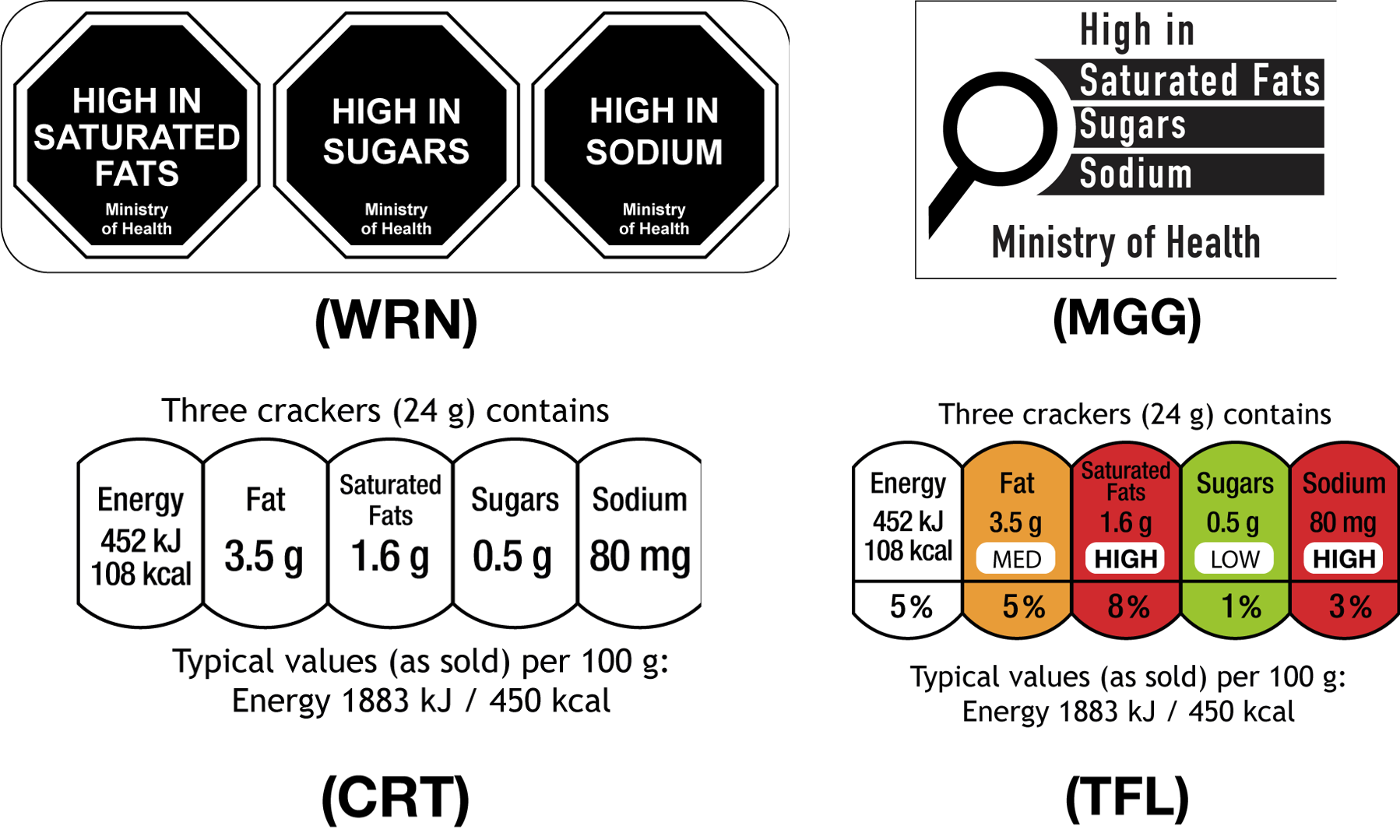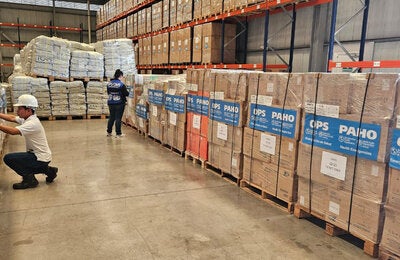
“The study is vital, because unhealthy food and drink products are associated with some of our deadliest diseases and conditions like high blood pressure, diabetes, and obesity,” PAHO expert says.
Washington, DC. March 9, 2021 (PAHO) – Octagonal nutritional warning labels on food and drink products performed best in helping consumers make healthier choices, according to the first study on front-of-packaging labeling systems in the Caribbean. The study showed that the octagonal warnings were the easiest to understand and use by Jamaican consumers choosing food and drink products at supermarkets in nine parishes throughout the country.
The octagonal warnings are one of several different kinds of labeling systems developed to indicate when food and drink products are high in sodium, sugar, sodium/salt, fats, saturated fats, and trans fats. The study, a randomized controlled trial, compared the efficacy of three different kinds of labeling systems in helping consumers (i) identify the least harmful product, (ii) identify if products had excessive amounts of sugars, fats and/or sodium, (iii) and decide to purchase the least harmful product more often. The participants, who were interviewed between December and February, were of varying ages, genders, and socioeconomic and educational status.
“This study showed clearly that the octagonal labels work best at helping people identify and choose healthier foods,” said Dr. Anselm Hennis, director of the department of noncommunicable diseases and mental health of the Pan American Health Organization (PAHO), which co-conceived the study. “The study is vital, because unhealthy food and drink products are associated with some of our deadliest diseases and conditions like high blood pressure, diabetes, and obesity.”
Along with the octagonal warnings (WRN), the other front-of-package labels used in the study were the magnifying glass (MGG) and the traffic-light (TFL). Nutrition facts about the products listed on the front of the package (known as nutrition facts up front) was used as the control (CRT), meaning that the three types of labels were compared against it.
In the study, each group of participants was shown mock-up products with one of the front-of-package labels and asked to perform three tasks for different categories of products: select the option they would buy (they could also choose not to purchase any of the products); select the least harmful option; and identify the nutrients that were in excess in the products.
For the first task, participants shown products with the octagonal warnings were about twice as likely (1.9-fold increase) to choose the least harmful food products more often, compared to the nutrition facts up front. The magnifying glass and the traffic light warning labels did not help participants choose the least harmful products more often.
For the second task, participants shown products with the octagonal warning labels were about twice as likely (2.1-fold increase) to correctly identify the least harmful products more often, compared to the nutrition facts up front. In comparison, participants shown products with the magnifying glass were only 60% more likely to identify the least harmful products while the traffic-light label did not help consumers in their decision-making.
For the third task, participants shown products with octagonal warnings were nine times more likely to correctly identify those that were excessive in sugars, saturated fats or sodium, compared to those shown products with nutrition facts up front. Participants shown products with the magnifying glass were 5.8 times more likely to correctly identify products with excess nutrients, and participants shown products with the traffic light were 3.4 times more likely to do so.
“This study validates the CARICOM Regional Organisation for Standards & Quality proposal to use the octagonal warnings on food and drink products throughout the Caribbean,” Dr. Hennis said. The organization proposed that CARICOM adopt the octagonal warnings as the subregional standard for labeling of prepackaged foods. CARICOM’s decision is expected to be finalized by April 2021.
The study, conceived, designed and conducted by the Ministry of Health and Wellness of Jamaica, the University of Technology, Jamaica, and PAHO, contributes to the body of robust scientific evidence accumulated in other countries of the Americas.




